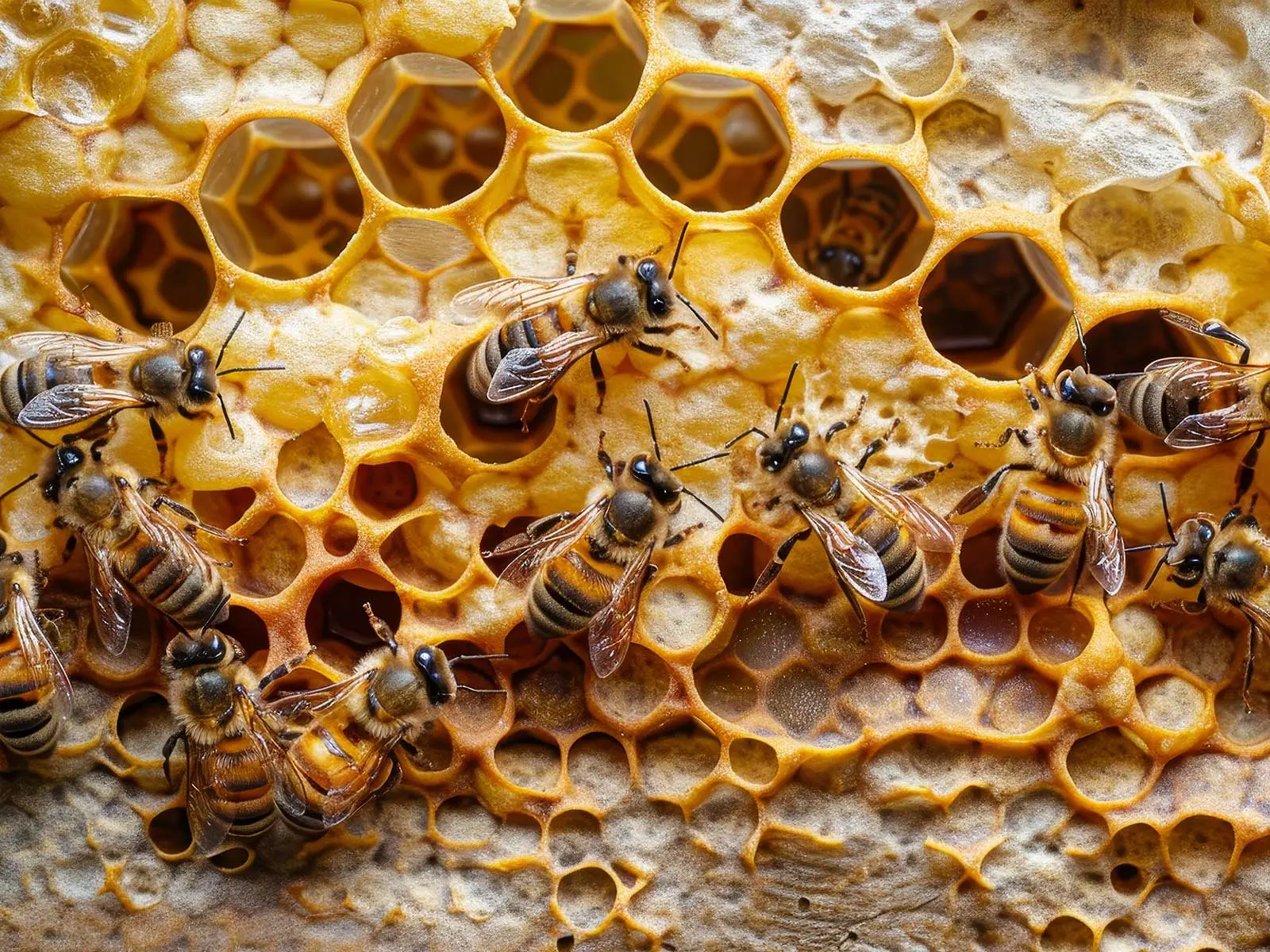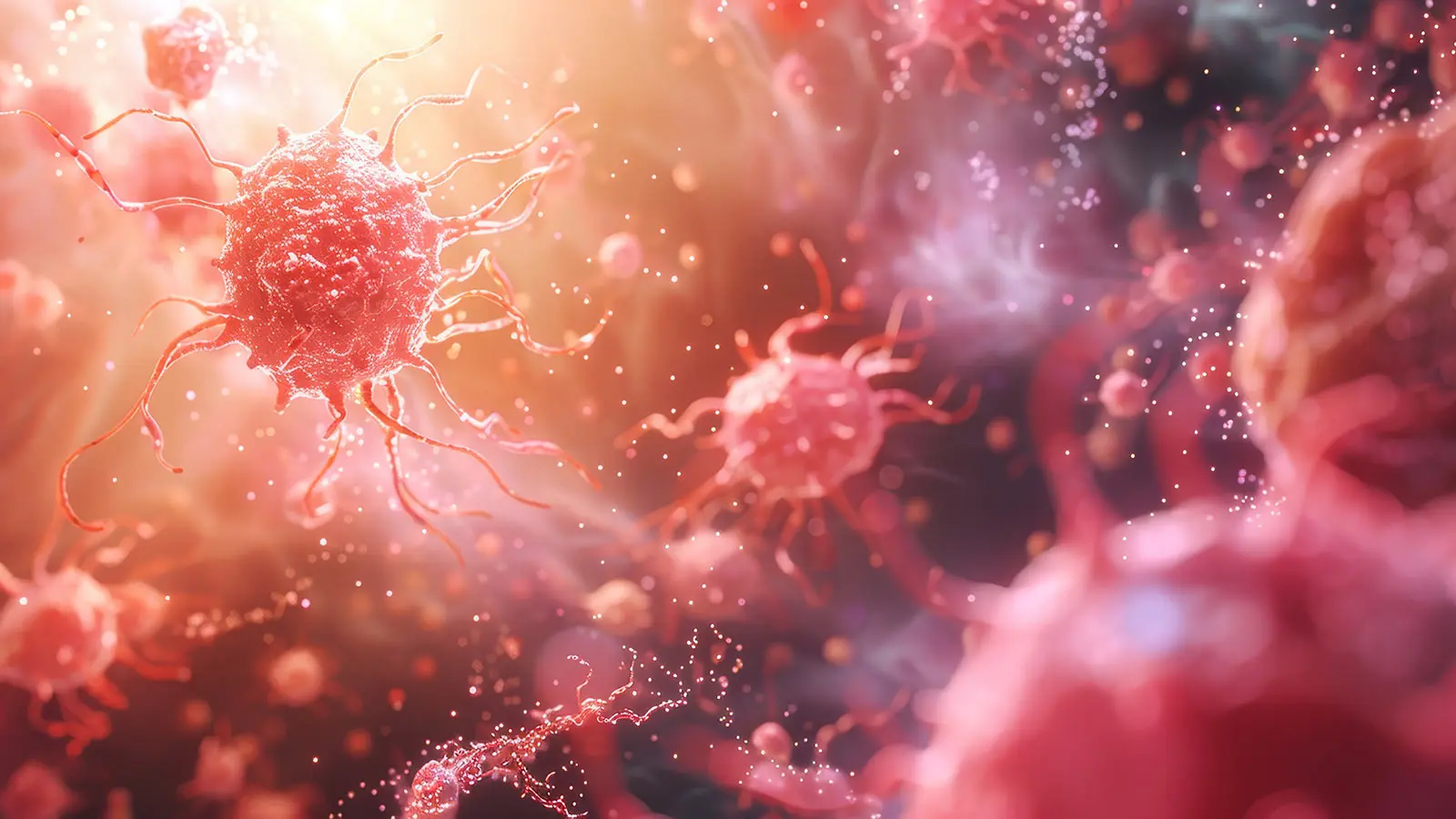
Issue 52
Nov 2024
INSIGHTS
By Dr Leong Sai Mun, Research Assistant Professor, NUS Centre for Cancer Research (N2CR) & Department of Pathology, NUS Yong Loo Lin School of Medicine

In the field of ecology, studying the cooperative behaviour of social insects helps us understand the dynamics of our ecosystems. Conversely, in the field of oncology, our goal is to disrupt rather than promote the cooperative relationships among cancer cells. Understanding the mechanisms of cancer cell cooperation may lead to the development of new therapeutic strategies, resulting in more effective treatments.
Humans are inherently social beings, a fact we often take for granted since nearly every aspect of our lives is shaped by our social tendencies. This innate sociability becomes even more pronounced during times of hardship, such as wars, famines, natural disasters, and pandemics.
For example, in the ongoing Gaza conflict, humanitarian operations are providing food and medical supplies to over 1 million displaced people. This international cooperation among various humanitarian organisations highlights how human solidarity can help to alleviate the suffering of those who are strangers to us. Similarly, during the COVID-19 pandemic, individuals worldwide paid a short-term cost to cooperate—through social distancing, frequent hand washing, and self-imposed quarantine—for the collective good to curb the virus’ spread. Historical accounts from the World Wars also showcase our social nature, as stories of martyrs who sacrificed their lives in resistance movements continue to inspire patriotism in young citizens in different nations. These acts of cooperation and sacrifice are testaments to our deeply ingrained social nature, enabling us to work together and support one another in times of crisis.
However, humans are not the only organisms in nature that exhibit social cooperation and even self-sacrifice. In fact, cooperation is prevalent throughout the natural world, observed in organisms ranging from mammals like us to insects and even microscopic bacteria and viruses.
A kaleidoscope of cooperations in nature
Many mammals form highly cooperative societies. Prairie dogs from Northern America, which are social rodents living in large colonies, display altruistic behaviour by acting as sentinels that stand guard while others forage for food, alerting the group with alarm calls if they detect potential threats like predators. This behaviour benefits the entire colony but may come at the cost of increased vulnerability for the sentinel, as their calls could draw attention from predators to themselves. Additionally, vampire bats from Central and South America can even regurgitate and share their blood meals with colony members who have been unsuccessful in finding food. This behaviour is critical to the survival of individual vampire bat within the colony during times of food scarcity.
Cooperative acts, especially those that are self-sacrificial in nature, are also widely observed in eusocial insects such as the bees, ants and termites. Many workers in colonies of cooperative insects exhibit reproductive altruism, sacrificing their own reproductive potential to care for the queen’s eggs, which she lays throughout her lifetime. In more extreme acts of cooperation, workers from some species of these insects may sacrifice themselves to defend their nests. When a hive is threatened, worker bees sting intruders to protect the colony, but detachment of the barbed stinger from the bee’s abdomen causes the bee’s internal organs to be pulled out, resulting in the bee’s death. Meanwhile, workers of a species of termite native to French Guiana explodes itself to protect its colony from invading insects, spraying toxic chemicals onto their enemies that corrode their bodies. These amazing acts of self-sacrifice underscore the vital role of self-sacrifice in ensuring the survival and continuity of these colonies, highlighting their deeply ingrained social and cooperative nature.
Bees exhibit extreme cooperation, giving up their reproductive potential and lives to ensure the colony's survival. Bacteria and virus can also cooperate. In a virus known as vesicular stomatitis virus, which can cause mild flu-like symptoms in human, some virus can shut down the ability of our body cells to produce and secrete substance known as interferon, which usually serves to induce a virus-resistant state in neighbour cells. In doing so, these viruses sacrifice their ability to produce more progenies but allow other viruses to invade the neighbour cells efficiently.
Bacteria and virus can also cooperate. In a virus known as vesicular stomatitis virus, which can cause mild flu-like symptoms in human, some virus can shut down the ability of our body cells to produce and secrete substance known as interferon, which usually serves to induce a virus-resistant state in neighbour cells. In doing so, these viruses sacrifice their ability to produce more progenies but allow other viruses to invade the neighbour cells efficiently. In Escherichia coli bacteria that are commonly found in our guts, a minority of the population can produce a chemical compound known as indole, at the expense of their own growth, to cause the rest of the population to become resistant to antibiotics.
Cancer cells can cooperate with each other too
Beyond organisms found in nature, cooperative strategies have also been identified in cancer cells, aiding their resistance to chemotherapy and their ability to thrive in the human body. As early as the 1970s and 1980s, cancer researchers such as Dr Gloria Heppner from the US provided early evidence of cooperation among cancer cells. However, this was during an era when technological advances were insufficient for a detailed investigation of this phenomenon, and scientific attention was primarily focused on how gene mutations cause cancer. With the advent of high-tech next generation sequencing technology in the 2010s, which allows researchers to analyse gene expression and mutations at the single-cell level, it became evident that different subpopulations of cancer cells with distinct mutations and characteristics coexist within the same tumours and may cooperate by secreting different growth factors to help each other thrive and grow.
The author has recently published a paper demonstrating the self-sacrificial behaviour of a minority of breast cancer cells, which enables the rest of the tumour population to become resistant to the chemotherapeutic agent taxane. These altruistic breast cancer cells secrete specific proteins that signal neighbouring cells, inducing a state of chemoresistance at the expense of the altruistic cells’ ability to proliferate. Furthermore, the author’s laboratory has observed that even if all altruistic breast cancer cells are removed from the population, new altruistic cells can arise from existing non-altruistic cells through a mechanism called epigenetic reprogramming, which does not require gene mutations.

Overall, research suggests that chemoresistance in breast cancer cells might be a social phenomenon, and that targeting altruistic cancer cells may not be the best therapeutic approach, as new altruistic cells can readily and spontaneously emerge within the tumour. Notably, there appears to be similarities in the mechanisms and dynamics of altruism between breast cancer cells and organisms found in nature. This raises the possibility that decades of research on cooperation in various organisms in nature could be applicable to the study of cooperation in cancer cells.
Cooperation: A double edged sword?
The study of cooperation has advanced significantly since Charles Darwin published the iconic book “On the Origin of Species” in 1859. In this seminal work, which has profoundly influenced the field of evolution, Darwin himself noted that social insects like bees pose a challenge to his theory of natural selection—if life on earth is all about the survival of the fittest, how can the ‘noble’ traits of altruistic individuals, who sacrifice themselves for the benefit of others, be passed on to future generations and be propagated? Since Darwin, several theories explaining the rise of altruistic cooperation in nature have been proposed, such as kin selection theory, which suggests that individuals are more likely to help relatives to ensure the survival of shared genes, and cooperation altruism, which posits that cooperation can evolve if individuals reciprocate helpful acts.
Understanding cooperation in humans has profound practical implications for multiple fields. In the study of sociology, understanding cooperative behaviour is essential for the functioning of societies, as it fosters social cohesion, trust, and effective collaboration. In international relations, knowledge of cooperation helps in developing strategies for conflict resolution between nations and fosters greater international collaboration in areas such as trade, diplomacy, climate change and humanitarian operations.
In ecology, studying cooperation in insects such as bees is crucial for understanding ecosystem dynamics and biodiversity. Bees exhibit complex cooperative behaviours vital for pollination, which is essential for the reproduction of many plants and the production of food crops. By understanding how bees communicate, work together, and divide labour, scientists can develop better conservation strategies to protect these key pollinators, thereby maintaining the health of the ecosystems that depend on them.
However, in the context of oncology, we seek to achieve the opposite—we aim to disrupt rather than promote cooperation. We have seen that cancer cells can cooperate to proliferate and resist treatments, making tumours more resilient and harder to treat. Understanding these cooperative mechanisms can lead to the development of new therapeutic strategies that disrupt this collaboration, potentially leading to more effective cancer treatments that can improve patient outcomes. Similarly, the cooperative strategies of bacteria or viruses that are harmful to humans also need to be suppressed.
Ultimately, whether to promote or disrupt cooperation depends on the context and desired outcomes. By advancing our understanding of cooperative behaviours across different fields, we can harness this knowledge to foster beneficial collaborations or mitigate harmful ones, thereby addressing various societal and biological challenges faced by humanity.
More from this issue

INSIGHTS
Incentives and Behaviour Change
ALL IN THE FAMILY
Using Football Analytics to Improve Primary Care Delivery


